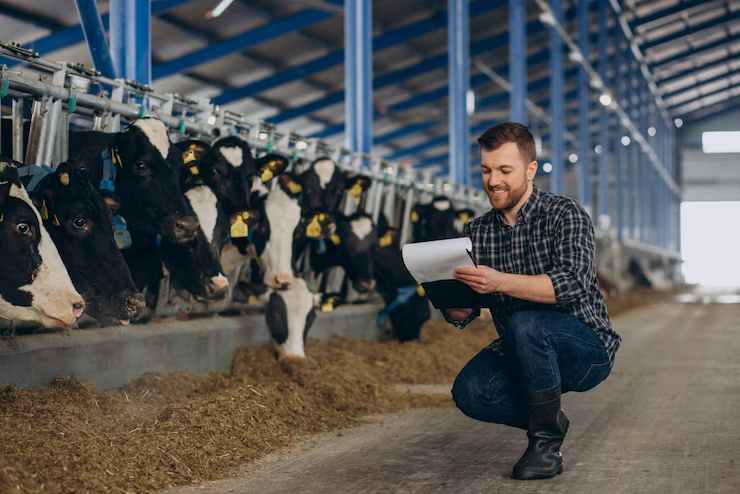In the realm of modern livestock management, efficient cattle feeding systems are paramount for ensuring the health, productivity, and profitability of beef and dairy operations. From traditional feeding methods and fertilizer to innovative automated systems, the design and implementation of cattle feeding systems play a pivotal role in optimizing feed utilization, minimizing waste, and maximizing herd performance.
In this article, we’ll delve into the importance of cattle feeding systems, their types, and key considerations for selecting the right system for your operation.
The Importance of Cattle Feeding Systems
Cattle feeding system are the backbone of efficient feed management on farms and ranches, providing a structured approach to delivering nutritionally balanced diets to cattle. A well-designed feeding system ensures that cattle receive the right amount of feed at the right time, promoting optimal growth, reproduction, and overall health. By optimizing feed utilization and minimizing feed wastage, cattle feeding systems help maximize profitability for producers while also promoting sustainability and environmental stewardship.
Types of Cattle Feeding Systems
There are several types of cattle feeding systems available, each offering unique advantages and catering to different management practices and herd sizes:
- Traditional Feeding Methods: Traditional feeding methods, such as hand-feeding or using troughs and bunk feeders, are commonly used in smaller-scale operations or where labor availability is high. These methods offer flexibility and allow for close monitoring of feed intake, but they may be labor-intensive and less efficient compared to automated systems.
- Self-Feeding Systems: Self-feeding systems, also known as free-choice feeding, allow cattle to access feed at their convenience without the need for manual distribution. These systems typically utilize feeders or bins that dispense feed as cattle consume it. Self-feeding systems are ideal for extensive grazing systems or operations with limited labor availability, as they help minimize labor costs and ensure continuous access to feed.
- Automated Feeding Systems: Automated feeding systems utilize technology to deliver precise amounts of feed to cattle at predetermined intervals. These systems may include robotic feeders, feed wagons, or automated bunk management systems that monitor feed intake and adjust feeding schedules accordingly. Automated feeding systems offer increased efficiency, precision, and control over feed management, allowing producers to optimize feed utilization and minimize wastage.
Considerations for Choosing a Cattle Feeding System
When selecting a cattle feeding system for your operation, several factors should be taken into account to ensure optimal performance and cost-effectiveness:
- Herd Size and Composition: Consider the size and composition of your cattle herd, as well as their nutritional requirements and feeding behavior. Choose a feeding system that can accommodate the number of cattle you have and provide adequate access to feed.
- Feed Type and Handling: Different types of feed require different feeding systems and handling mechanisms. Ensure that the feeding system you choose is compatible with the type of feed you’ll be using and can deliver it efficiently to your cattle.
- Labor Availability and Management Practices: Consider the availability of labor in your operation and your preferred management practices. Choose a feeding system that aligns with your labor resources and management style, whether it’s hand-feeding, self-feeding, or automated feeding.
- Cost and Efficiency: Evaluate the cost-effectiveness of different feeding systems, taking into account factors such as initial investment, ongoing maintenance, labor requirements, and feed utilization efficiency. Choose a feeding system that offers the best balance of cost and efficiency for your operation.
Conclusion
Cattle feeding systems are essential components of modern livestock management, providing a structured approach to delivering nutritionally balanced diets to cattle. Whether it’s traditional feeding methods, self-feeding systems, or automated feeding systems, selecting the right feeding system for your operation is crucial for optimizing feed management, maximizing herd performance, and enhancing profitability. By considering factors such as herd size, feed type, labor availability, and cost-effectiveness, cattle producers can choose a feeding system that meets their specific needs and contributes to the success of their operations.
Read Also:
- Maximizing Fun and Entertainment: Lotus365’s Mission
- Check Out These Trending Plus Size Summer Dresses For Women Over 50

